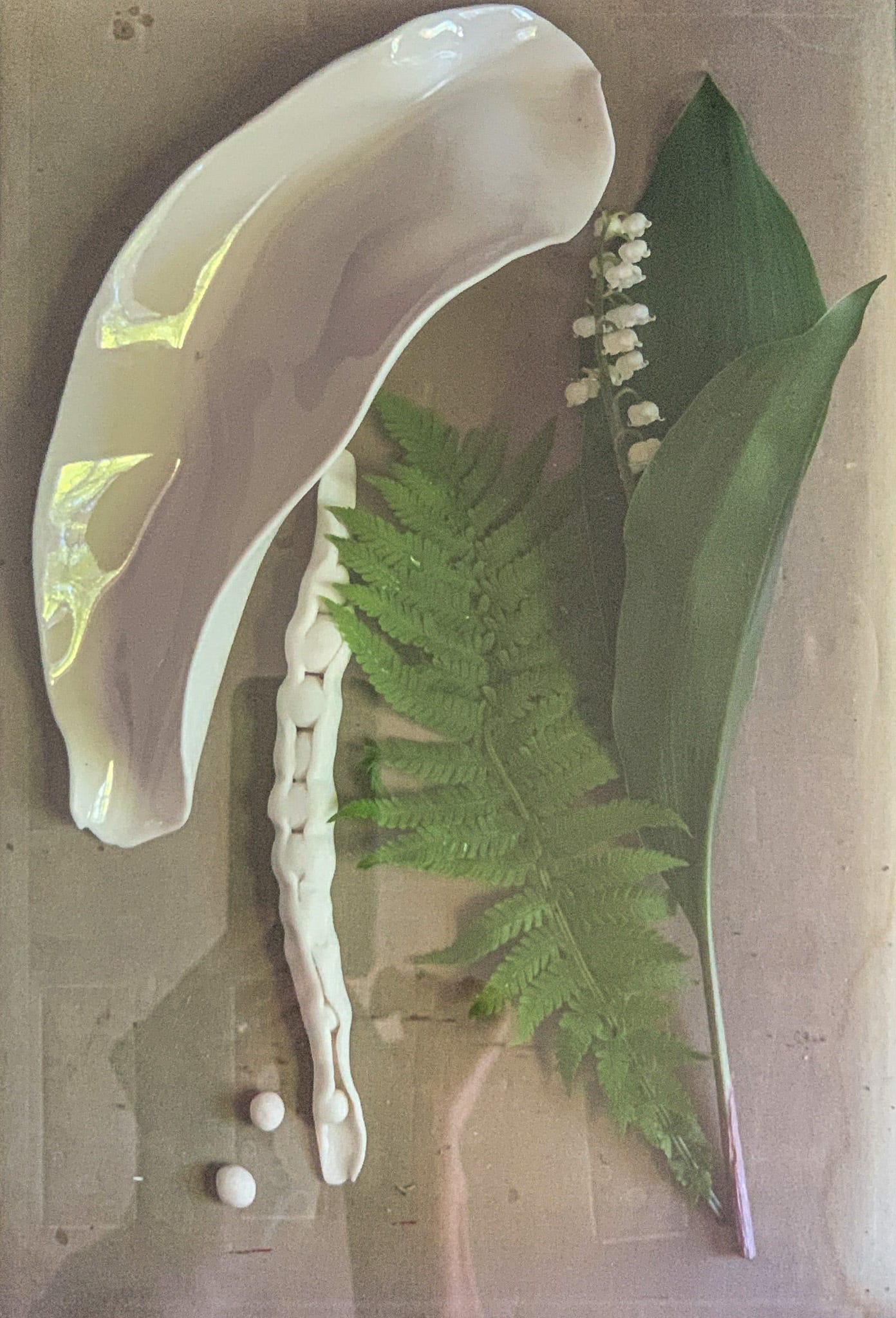I have a little coffee table in the living room, the kind with a glass box on top. I bought it from an estate sale in my neighbourhood, before the home was sold and torn down. The owners had died and left their grown children to sift through decades of books, fur coats, silverware, marble-topped dressing tables and other things not suited to their current lives. The daughter, a grey-haired woman in a sweatsuit and sneakers, noticed me looking at the little glass-topped table. She told me her mother used to display her precious shells inside. Treasures to peer at through the glass, just at little-girl height, she said.
My youngest son quickly filled it with his tin soldier collection, rotating the diorama depending on the battle, on the day, on his mood.
Nestled in there now is a porcelain leaf, long and gently curved, and porcelain peas in their pod. It’s fragile and precious work, so they’ll live here under glass, a terrarium of sorts. The ceramics were made by my friend Heather- an artist, a beachcomber, a collector of nature. She displays swallows' nests, tangles of dried kelp, dripping lichen and long, arthritic branches on her mantles, sideboards and in the foyer of her old Victorian home. Spring is in full bloom - I imagine wisteria is climbing up her brick home and unfurling its purple blossoms as I write. But inside, life is celebrated in all its stages - alive, dried and immortalized in porcelain.
*
There is a 24 foot crystal encrusted horse created by Damien Hurst bursting from a wall in Selfridges. Its name is Pegasus, and it lives in the Brasserie of Light, spreading its sparkling wings above the restaurant below. Heather told me about Pegasus. She also told me about the delicate porcelain light fixtures on display in Liberty. And The New Craftsman in Mayfair, where art mimicking plant life is currently on display, or the 20 millions seeds planted in the moat surrounding the Tower of London that bloomed in time for the Queen’s Jubilee. Inspiration is everywhere.
*
Terrariums were invented by the botanist Nathaniel Bagshaw Ward in 1842. He was observing insects in a glass jar, but when he accidentally left one unattended, a fern spore in the jar germinated into a plant. This jar became the first terrarium, or what Ward later called - after various iterations - the ‘Wardian Case.’ Soon Wardian Cases were used to successfully transport native plants from Britain throughout the British Empire and back again.
My Wardian Case sits at the end of the sofa. Inside are the still life’s from Heather’s garden, but her travels, observations and inspirations are also in there too, baked into the porcelain. The fern and lily of the valley are from my garden, offering shape, scent, and a nod to the spore that started it all.
In the spirit of capturing peas and making them last, I’m sharing a ‘side that sits,’ - ie. it can travel and still thrive.
Peas with asparagus and pistachio gremolata
1 cup peas - fresh or frozen
Big bunch asparagus, ends trimmed
½ teaspoon salt
⅓ cup pistachios, toasted and chopped (I happened to have pistachios, they’re not traditional, just a nice option)
Handful flat leaf parsley, basil and or mint, roughly chopped
Zest from 2 lemons
1 clove garlic, finely chopped
1 tablespoon olive oil
Lemon juice
Sea salt to taste
Bring a big pot of water to a gentle boil. Add asparagus and peas and boil for 2 minutes, or until bright green and just tender. Drain well and rinse under cold water.
For the gremolata, combine pistachios, herbs, lemon zest and garlic. Loosen the mixture with a tablespoon of olive oil and juice from one of the lemons, then toss with peas and asparagus. Add more salt to taste and serve.
PS- I’ll be away next week, corralling inspiration, Heather style. More stories to come!







❤️❤️❤️